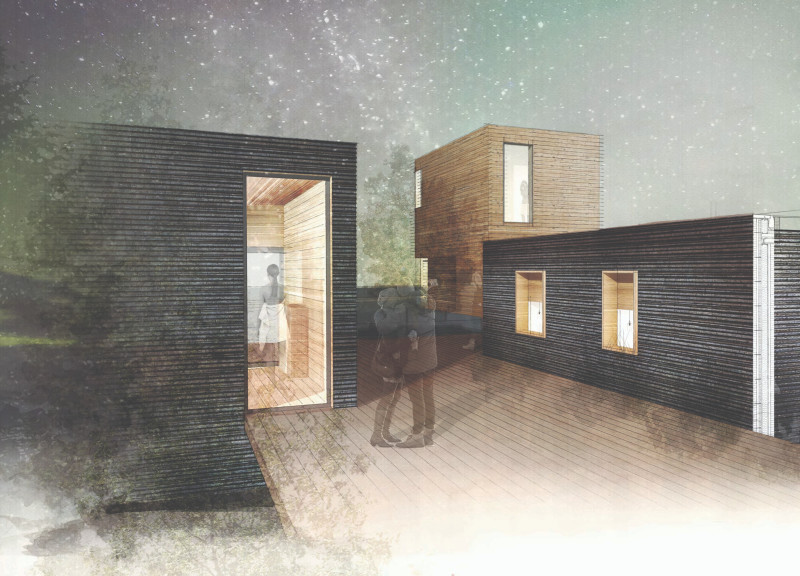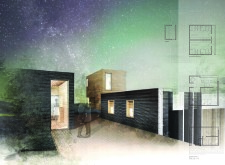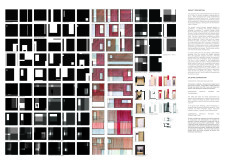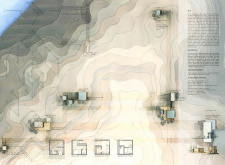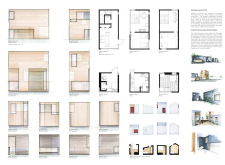5 key facts about this project
This project serves as a collection of guest pavilions, strategically positioned to foster connections among occupants while allowing for individual privacy. The overarching intention is to create spaces where inhabitants can gather, engage, and reflect in a serene setting. The arrangement of the structures reflects a careful consideration of their relationship with the surrounding environment, enhancing the overall experience of the space.
Key elements of the design include a series of modular pavilions that provide flexibility in use while maintaining a cohesive aesthetic. Each pavilion is distinct yet part of an integrated whole, which underscores the unity of the project. The careful positioning of these structures not only facilitates interaction among users but also creates a sense of enclosure that encourages comfort and tranquility. Open-air circulation paths, akin to boardwalks, connect the pavilions and invite residents to traverse the site while experiencing the varying depths of the landscape.
Materiality is a significant aspect of the project. Black-stained wood is utilized for the exterior cladding, imparting a contemporary appearance that contrasts with the natural tones of the environment. This choice of material provides durability while simultaneously establishing a visual and thematic dialogue between the built and natural elements. Inside, the use of natural wood fosters warmth and lends a sense of intimacy to the spaces. The interplay of these materials creates an inviting atmosphere that encourages occupants to engage with their surroundings.
The design pays attention to the integration of large glass elements, allowing for an abundance of natural light to penetrate the interiors. These glass components serve not only to illuminate the spaces but also to frame views of the landscape, blurring the boundaries between indoors and outdoors. This thoughtful inclusion enriches the user experience, inviting nature into everyday living.
The project stands out through its unique approach to privacy and community interaction. By clustering the guest pavilions in a way that promotes both socialization and seclusion, the design encourages a dynamic yet relaxed atmosphere. The careful planning draws occupants outward while ensuring that each structure provides its own retreat.
Furthermore, this architectural endeavor addresses sustainability through its design choices. By considering the solar orientation and prevailing winds, the project is optimized for energy efficiency, reducing its ecological footprint. The sensitivity to environmental factors not only enhances the comfort of the users but also positions the project as a responsible contribution to modern architecture.
In exploring this project, it is beneficial for readers to review the architectural plans, sections, and designs presented. These elements will provide deeper insights into the specific architectural ideas that informed the overall design approach. Understanding the nuances in spatial arrangements, material selection, and interaction with the site will enrich the viewer's appreciation of the architectural project. Through these detailed examinations, one can fully grasp the intention, functionality, and aesthetic values distilled within this thoughtful exploration of contemporary architecture.


